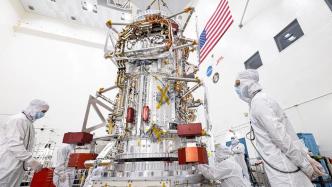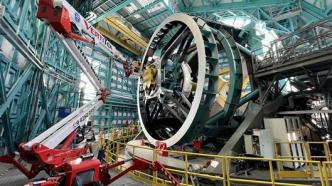

The European Spallation Neutron Source will welcome its first researchers next year. Image source for this article: "Nature" website
The calendar is about to turn to 2023, and scientists will also write new legends in the new year. The website of the British "Nature" magazine pointed out in a report on the 19th that the moon landing, mRNA vaccines, and beyond the standard model will become the most important scientific events worthy of attention in 2023.
The next generation of vaccines is coming
During the COVID-19 pandemic, the mRNA vaccine for COVID-19 became a blockbuster, and a series of mRNA vaccines to prevent other diseases are also being developed one after another.
The German biotech company (Biontech) expects to start the first human trials of its mRNA vaccine against malaria, tuberculosis and genital herpes in the coming weeks. The company is also working with Pfizer to test an mRNA vaccine candidate aimed at reducing the incidence of shingles. Moderna is also developing mRNA vaccine candidates against genital herpes and shingles.
In November, Biontech and Pfizer launched a phase 1 trial of an mRNA vaccine designed to prevent COVID-19 and influenza, including the original strain of the novel coronavirus, Omicron BA.4/BA.5, and mRNA strands of 4 influenza variant binding proteins.
Other teams are investigating the possibility of administering a COVID-19 vaccine via a rapid nasal spray. These sprays are effective in animals, but the road to human trials may be long.
Space exploration is exciting
The world is amazed by the first image taken by the James Webb Space Telescope. This year, scientists also published some new discoveries about the early universe with the help of the Webb Space Telescope. In the coming year, they will accelerate the pace of exploration and continue to share the results and new discoveries about the evolution of galaxies taken by the telescope.
The Euclid space telescope being developed by the European Space Agency, due to launch in 2023, will orbit the sun for six years and take pictures to create a three-dimensional map of the universe. The same mission is pursued by JAXA's X-ray Imaging and Spectroscopy Mission, an Earth-orbiting satellite that will detect X-rays from distant stars and galaxies.
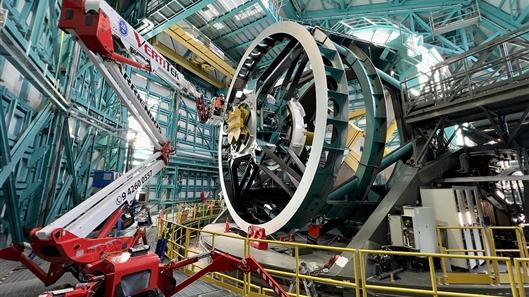
A technician installs fiber optic cables at the Vera Rubin Observatory, which will take its first image in 2023.
The Vera Rubin Observatory in Chile will also start taking images in July 2023. The telescope uses a special three-mirror design with a resolution of up to 3.2 billion pixels, and can survey the entire southern sky in just 3 nights.
In addition, China's Xinjiang Qitai Radio Telescope (QTT), the world's largest operable radio telescope, will enter an intensive construction phase. This giant sky-watching device is a 110-meter circular spherical radio telescope capable of observing 75% of the stars in the sky at any given time.
Lunar missions accelerate
On Dec. 11, as the Orion spacecraft of NASA's uncrewed Artemis 1 mission around the moon splashed down in the Pacific Ocean near California, the United Arab Emirates' The "Sid" lunar rover, NASA's "Lunar Torch" and Japan's "White Rabbit-R" lander headed for the moon. "White Rabbit-R" will attempt a soft landing on the moon next April. In addition, ISRO's Chandrayaan-3 will land near the south pole of the moon in the middle of next year. The first private trip to the moon will also take place next year - a six-day private space flight of 11 people aboard SpaceX's Starship rocket.
In April next year, the European Space Agency will launch the Jupiter Ice Moon Explorer (JUICE) mission, which aims to study the environment of the giant gas planet and its three moons.
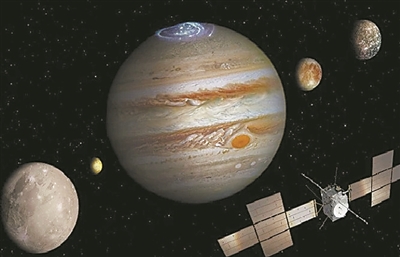
The Jupiter Ice Moon Explorer mission will study Jupiter and its moons Ganymede, Europa and Callisto.
Pathogen Watch List
In 2023, the World Health Organization will publish a new priority list of pathogens. About 300 scientists will evaluate more than 25 families of viruses and bacteria to identify potential future pandemic-causing pathogens. They will also develop R&D roadmaps for each priority pathogen, outlining knowledge gaps, identifying research priorities, and guiding the development of vaccines, treatments, and diagnostic tests.
CRISPR therapy expected to be approved
The first CRISPR gene-editing therapy could be approved next year, given promising results from clinical trials using the CRISPR-Cas9 system to treat two inherited blood disorders, beta-thalassemia and sickle cell disease.
Vertex Pharmaceuticals and CRISPR Medicine are currently developing the exa-cel therapy, which works by collecting a patient's own stem cells and using CRISPR-Cas9 technology to edit faulty genes before infusing the cells back into the body. Vertex expects to file with the U.S. Food and Drug Administration next March for approval to offer exa-cel therapy to people with beta-thalassemia or sickle cell disease.
Climate deal details hammered out
At the end of November, the twenty-seventh Conference of the Parties to the United Nations Framework Convention on Climate Change (COP27) finally came to an end in Sharm el-Sheikh, Egypt. One of the results was the establishment of a fund that required developed countries to support poor countries for climate change. This marks a major step towards climate justice for countries around the world. Under the agreement, richer countries historically responsible for high emissions will financially compensate poorer countries, which bear the brunt of climate change. But the details still need to be finalized. A "transition committee" is expected to meet by the end of March next year to make recommendations on how to organize the funds, which will be held during the 28th Conference of the Parties to the United Nations Framework Convention on Climate Change in Dubai next November. Submit to delegates from all over the world.
Beyond the standard model or the dawn
Physicists have published the first results of the muon g-2 experiment, with more precise results expected in 2023. The experiment studied the behavior of short-lived particles called muons in a magnetic field and put the Standard Model of particle physics to the test.
China's Jiangmen Underground Neutrino Experimental Observatory will also accurately measure neutrino oscillations through detectors located at a depth of 700 meters underground to discover physical phenomena beyond the Standard Model.
Another event much anticipated by particle physicists is the European Spallation Source (ESS) in Lund, Sweden, which will welcome its first researchers in 2023. Scientists will use the most powerful linear proton accelerator ever built, producing intense beams of neutrons to study the structure of materials.
New hope for Alzheimer's disease
In early January, U.S. regulators will announce whether the drug lecanemab can be used to treat Alzheimer's disease. Previously, a large trial showed that lecanemab can significantly slow the rate of cognitive decline in patients.
Lecanemab, developed by Eisai Pharmaceuticals of Japan and Biogen Biotechnology of the United States, is a monoclonal antibody that can clear the accumulated β-amyloid protein in the brain. This clinical trial recruited 1,795 patients with early Alzheimer's disease, and the results showed that compared with placebo, lecanemab can significantly slow down the decline of cognitive function in patients by 27%. But some scientists believe the drug's benefits are limited, while others worry about the drug's safety.
Anavex Life Sciences of the United States will continue clinical trials of its Alzheimer's disease drug blarcamesine, which activates a protein that improves the stability of neurons and their ability to connect to each other.
First nuclear waste repository begins operations
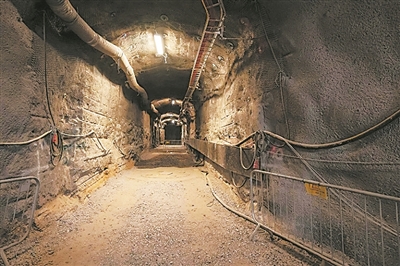
Tunnels inside the underground nuclear waste storage facility on the island of Olkiluoto, Finland.
In 2023, the world's first nuclear waste storage facility will start operating on the Finnish island of Olkiluoto. The Finnish government approved construction of the deep underground repository in 2015 to safely dispose of spent nuclear fuel. Up to 6,500 tonnes of radioactive uranium will be contained in copper tanks, which will be covered with clay and buried in granite bedrock tunnels 400 meters below ground. The nuclear waste will be sealed there for hundreds of thousands of years, at which time the radiation will become harmless to humans and animals.
(Originally titled "Nature Announces 2023 Scientific Events to Watch")
